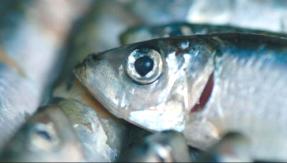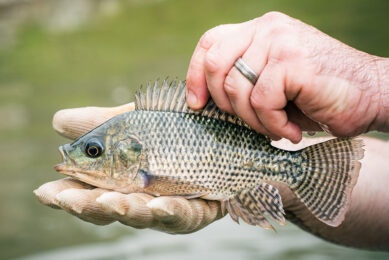Potassium diformate in sandeel and sardines

Acids are widely used to preserve fish and fish by-products, to prolong fishing time or to extend the storage duration of those fish. Christian Lückstädt and Rune Christ iansen have recently tested potassium diformate in sandeel and sardines and report on the outcomes.
Acid preservation of fish and fish viscera to produce fish silage has been a common practice (Lückstädt, 2007) and its final product has been widely used in fish feeds with reported beneficial effects (Gildbert and Raa, 1977; Åsgård and Austreng, 1981). It is a widely used method in many European countries to preserve fish-by-products as well as freshly caught “industrial fish” for further fish meal or fish oil production with formic acid, acetic acid or potassium diformate in order to prolong fishing time or to extend the storage duration of those fish.
In this respect, several studies have proved the performance enhancing effects of acidtreated fish meal on fish. Such a study was for instance carried out with Atlantic salmon Salmo salar (Christiansen and Lückstädt, World Aquaculture Society 2008). Fish fed pelleted diets containing potassium diformate (KDF) enriched fishmeal had a numerically increased body weight gain (17% and 19% for 0.8% and 1.4% KDF inclusion rate respectively).
Furthermore, both groups treated with KDF had a significantly better feed conversion ratio and fat digestibility (P<0.05). The studies presented here examined the effectiveness of a blend of potassium diformate, antioxidant and corrosion inhibitor as a preservative for sandeel, which is mainly caught in Danish fishing activities, and sardines, mainly caught in the Southern Pacific, at different temperatures.
During the sandeel preservation a storage temperature of 5°C was chosen, which reflects the situation of the North Sea fishing season. The potassium diformate blend was added in 3 different concentrations (0.25%, 0.50% and 0.75%) next to a negative control. At day zero samples of the sandeel were taken for Total Volatile Nitrogen (TVN) analysis prior to distribution into the storage containers. TVN is often used as a criterion for the freshness of fish raw material (Haaland and Njaa, 1987). This value in the fish before processing is known as the most important quality criteria for raw industrial fish and the fishermen is paid according to the measured TVN level when landing the catch at the fishmeal factories. The main constituents of TVN are trimethylamine and ammonia. Its amount increases with time of storage in the unfrozen state. Trimethylamine originates from bacterial decomposition, and the presence in fish is therefore taken as an indication for bacterial growth, while the ammonia comes from decomposition of amino acids – thus reducing the quality of the available protein. Levels of mainly 40 to 60, sometimes 80 mg TVN per 100 g fish mass are regarded by the industry as limits for a good quality fish meal for instance.
The pH levels of the treated sandeels were expectedly lower than the control – the lowest pH being on the highest concentration of preservative, reaching pH-levels between 6.4 and 5.4 respectively. Within treatments, once stabilised, there were no significant changes in the pH level. The total Volatile Nitrogen values in the negative control increased rapidly and exceeded already 40 mg after 77 hours at 5°C storage temperature, while they reached the level of 60 mg N / 100 g fish mass after 110 hours. The fast TVN development was delayed by the addition of the potassium diformate blend. This delay was dosage dependent. At 5°C it took 91 hours to exceed
The determined results clearly indicate that due to the addition of a potassium diformate blend an extension of the storage period of different fish species can be achieved. The storage period for sandeels (limit 40 mg TVN) added 0.75% potassium diformate blend was 2.2 times longer than that for the control at a storage temperature of 5°C. If the limit was set to be 60 mg TVN this period could even be extended more than 3 times compared to the respective negative control. The same holds true for the storage of sardines at elevated temperatures. The storage period for these fish added 0.625% potassium diformate blend or higher was 2.5 times longer than that for the control at both temperatures and was reaching either 8 or 5 days for storage temperatures of around 10°C and 16°C without any quality losses, respectively. This seems to be a very important finding, since fishing can be extended and the higher quality of the produced fish meal will allow a more economic and sustaining use of the limited resource fish meal.
Almost one-third of the world fish harvest is not used for direct human consumption, but is converted into fish meal or fish oil for further application in animal feed. Of the 75 million tons of fish about 25 million tonnes is therefore handled and processed in other ways than fresh, frozen, smoked or canned (Balios, 2003). The supply of huge volumes of high-quality fish meal is necessary to supply the aquaculture industry, which has been growing with around 8.8% annually since the 1950ies (FAO, 2007). Contrary to recent popular beliefs, most fish meal is produced from sustainable managed and monitored fish stocks, reducing the possibility of over-fishing (Miles, 2006).











